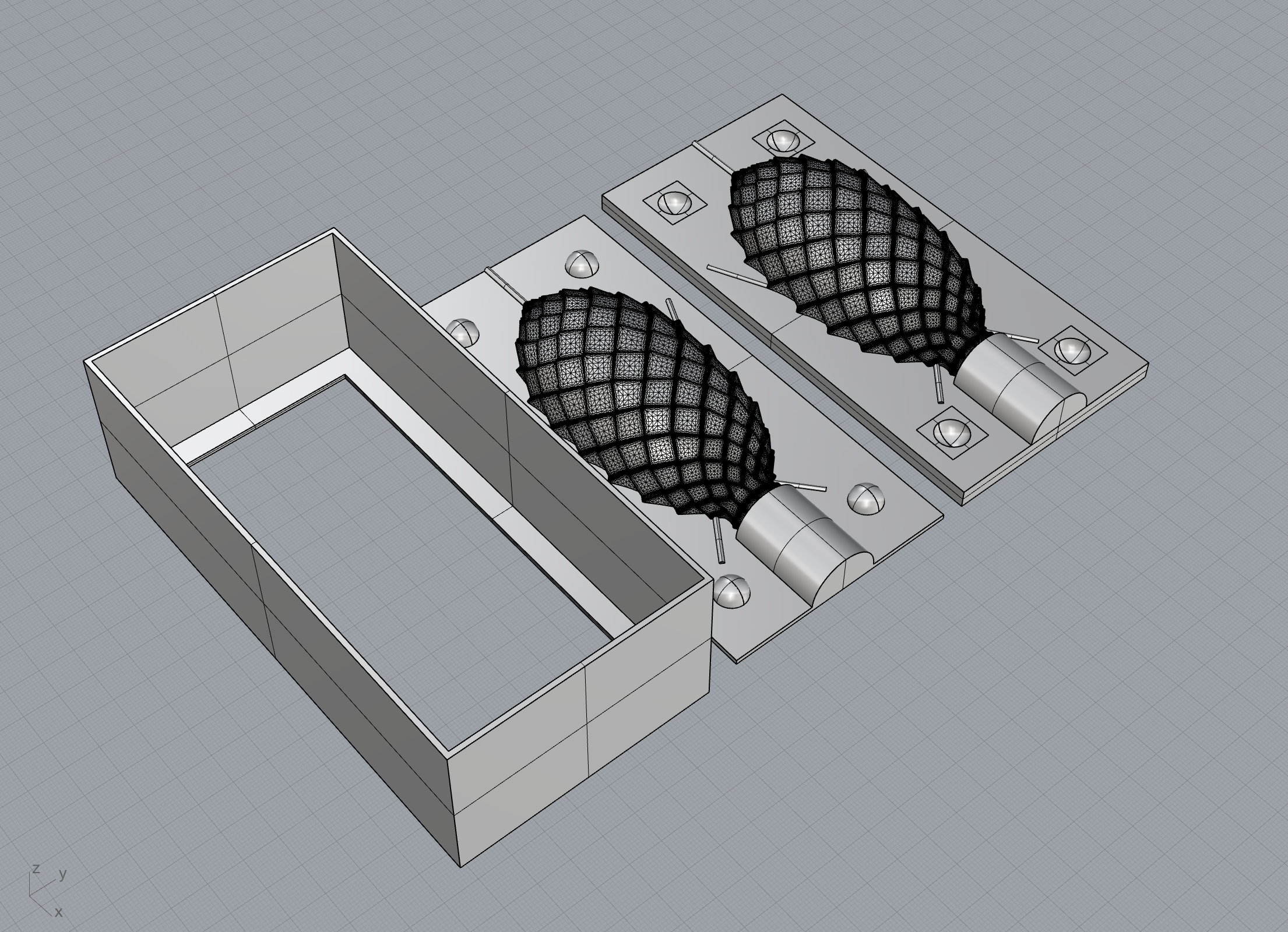A6: Casting and Mold Making
Candles!
My mom really loves pine cones, so I thought it would be nice to make her some pine cone candles that smell like fraiser fir (basically, candles that small like christmas).
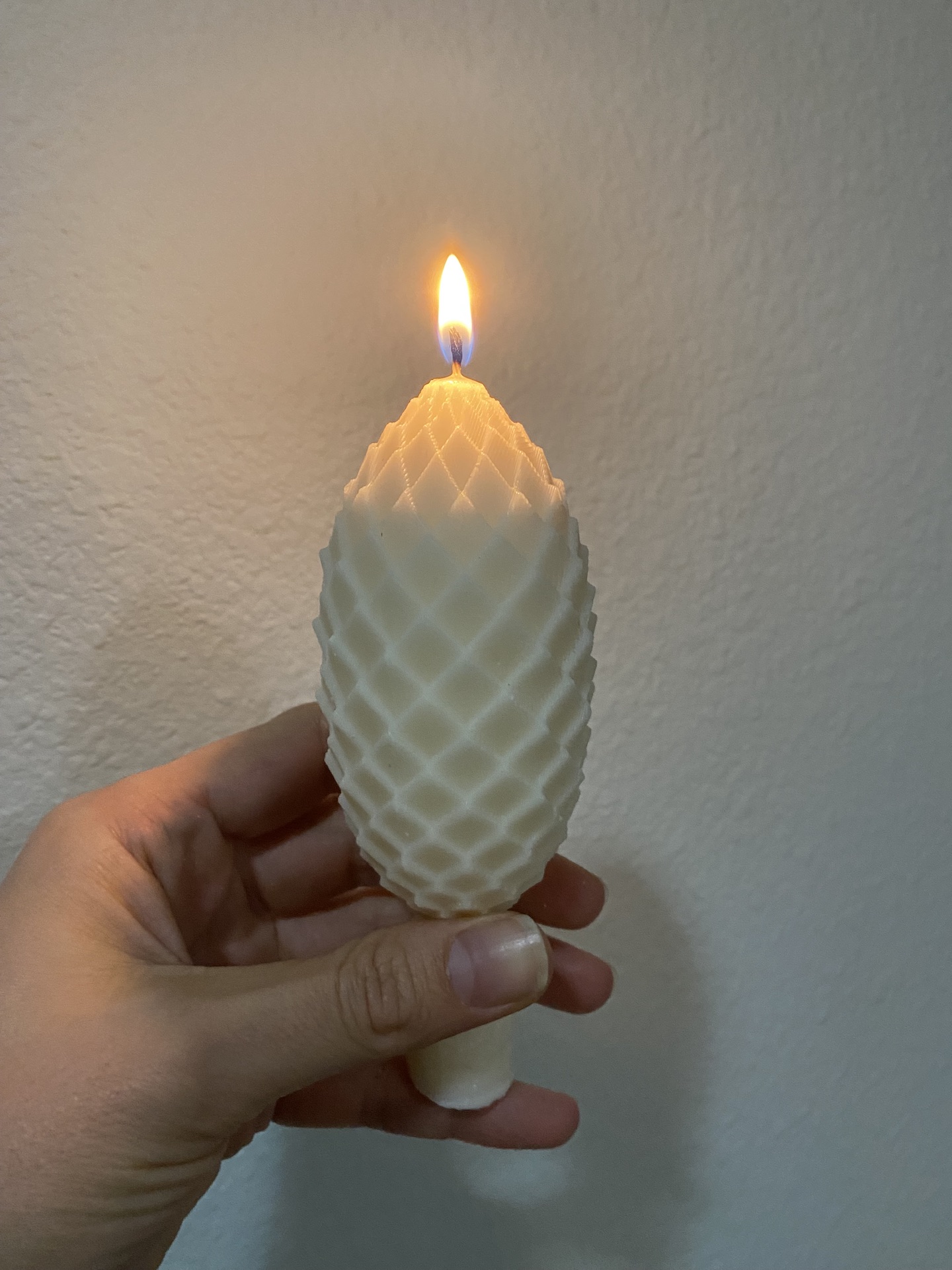
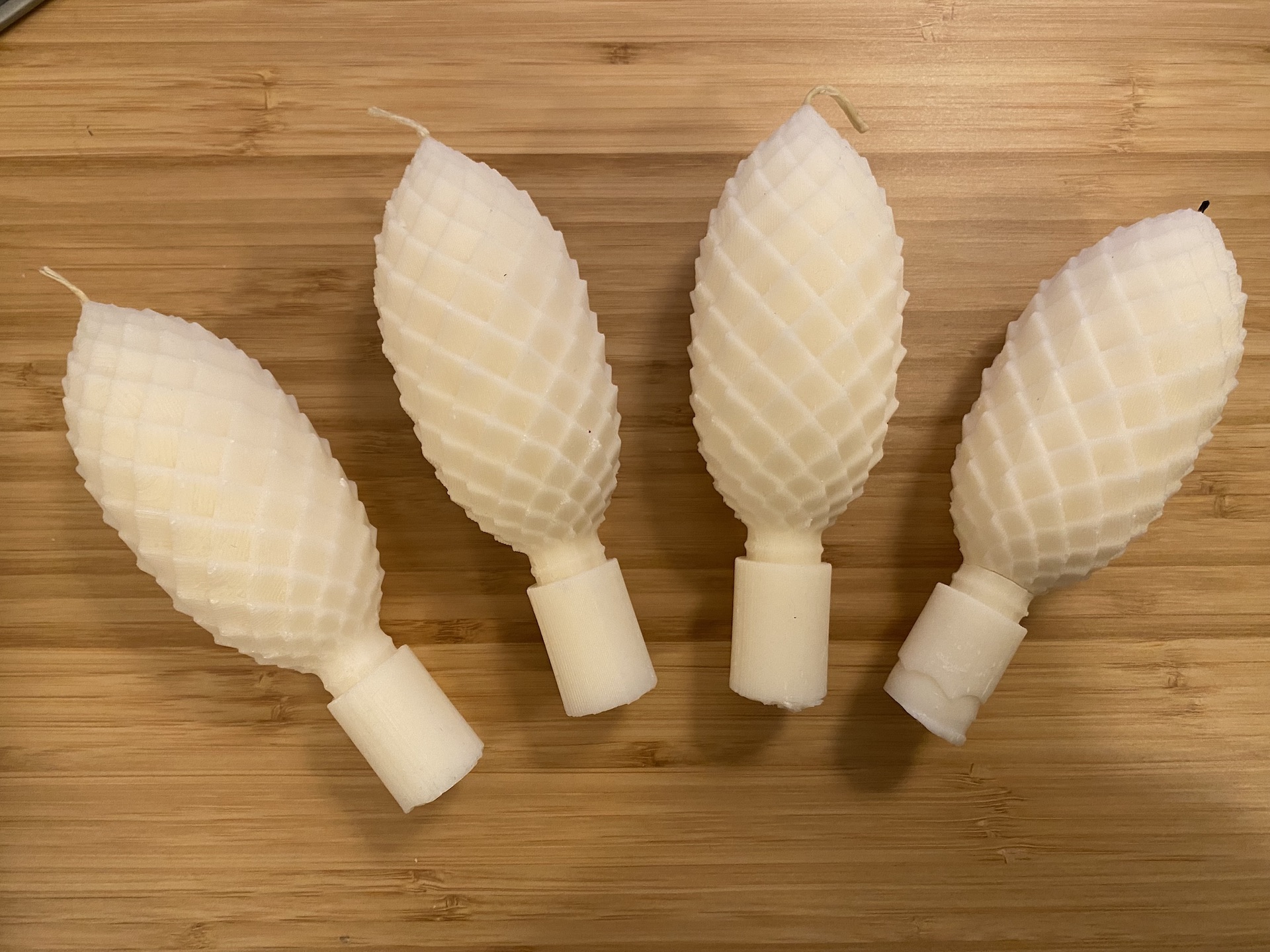
I intentionally left the sprue on the candles because it should be the same diameter as a standard candle holder (I haven’t actually had a chance to test this yet). In the future, I might iterate on how the sprue joins with the pine cone so that it more seemelssly integrates into the form. Also, because the sprue, as it is currently designed, creates a weak point where the candle can more easily snap.
Candle Materials
I did some googling to figure out what mateirals I needed to buy to make candles. I was able to buy all my supplies on amazon, but I later found out that there is a cool candle making supply store in Seattle called Zenith Supplies. In the future, I might buy more of my materials through them. I used pillar wax since I wanted freestanding candles. I chose a spool of waxed hemp for my wick since I didn’t need a wick with a metal base. Through this, I learned that candle making is actually more complicated than it seems, and there is so much room for potential when it comes to mixing sents, colors, and different types of waxes! I see more candle making in my future.
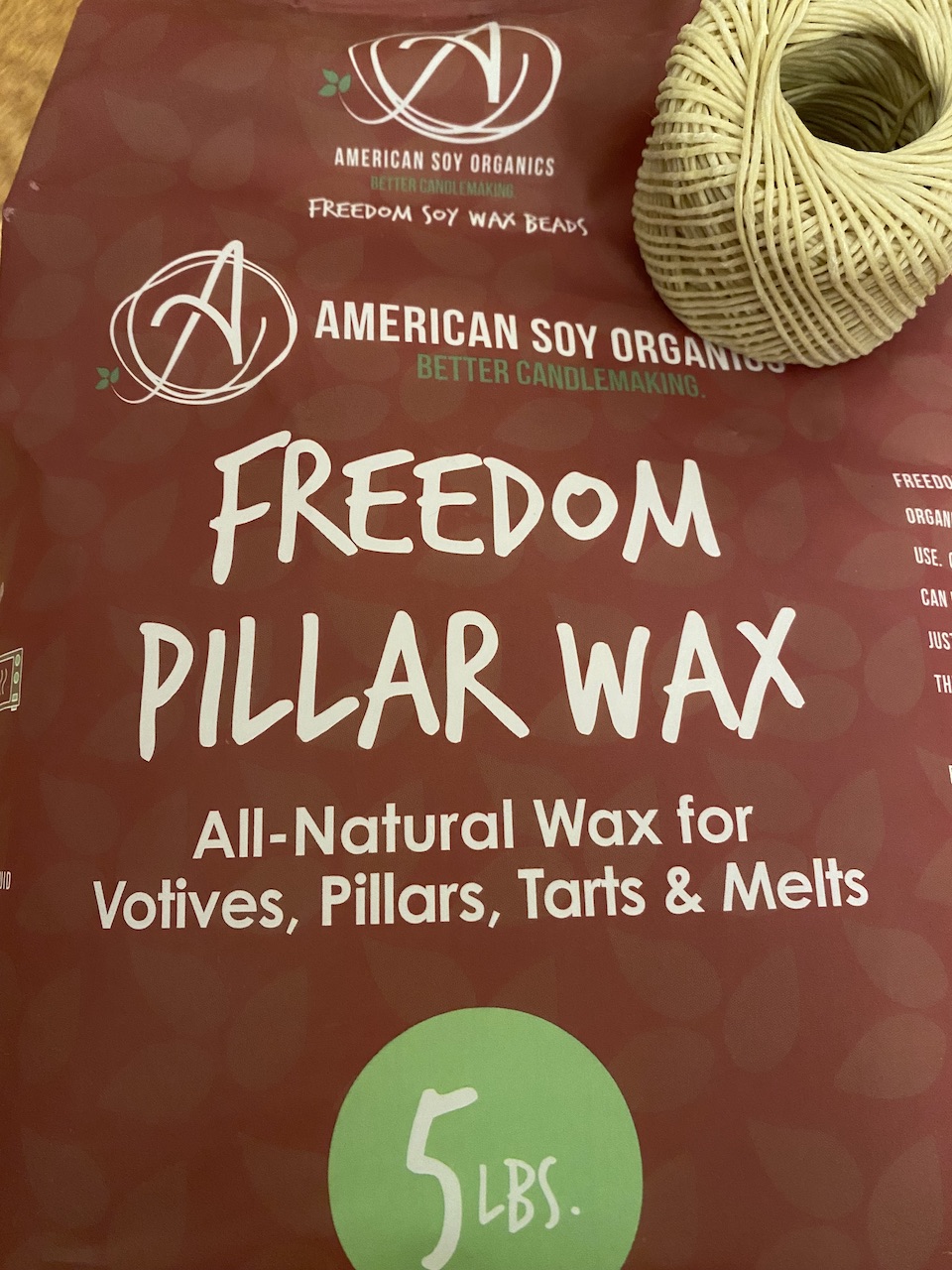
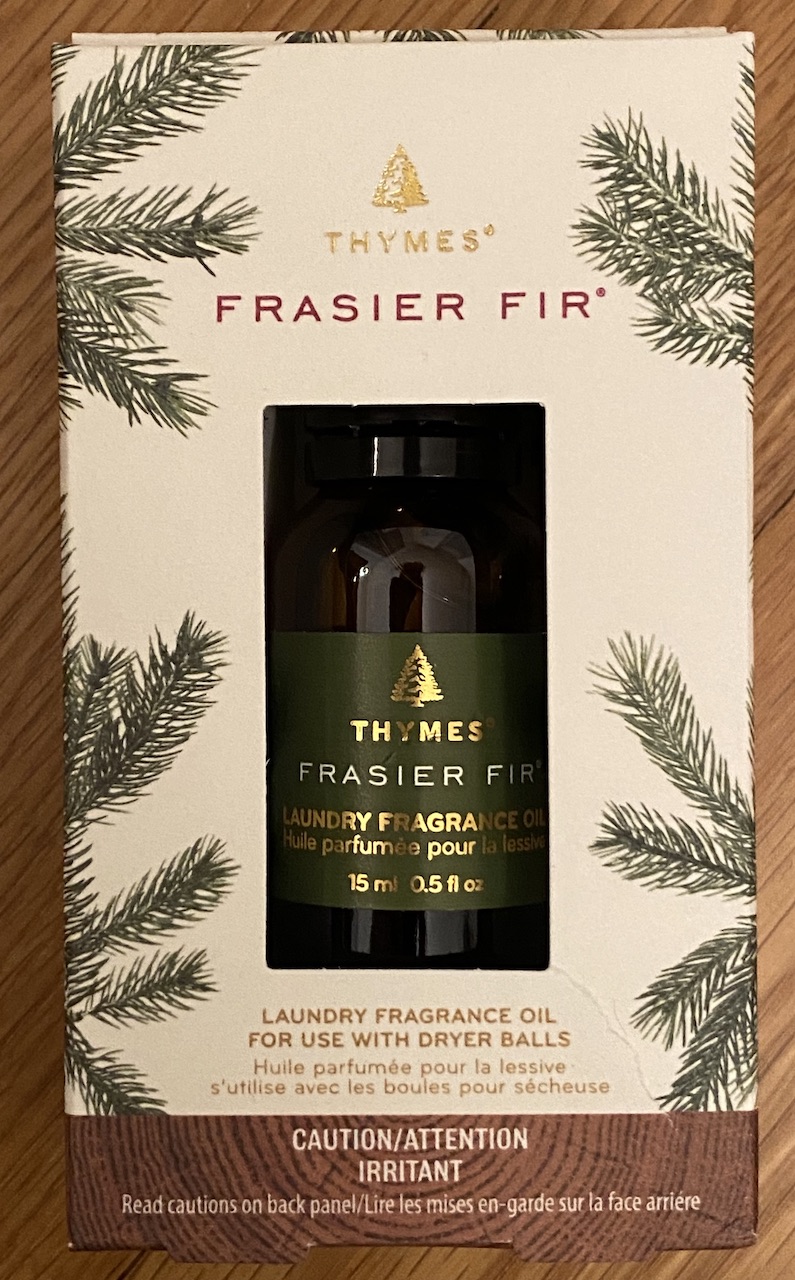
Test casts
Even though I am planning to make candles, I wanted to test out centering the wick and using the mold wiht the hydrostone provided. I was surprised how much of the 3D print detail was picked up by the silicone. Seeing all of the layers from the 3D print isn’t exactly the surface texture I was hoping for. I’m currently working on smoothing the surface of my mold with sulfer-free clay and hope to cast a second mold off of that for a better surface texture.
I printed the molds with a pretty thick layer height which reduces the surface quality, especially on a shape like this. I did that because I wanted to save time 3D printing so that I had time to troubleshoot any potential casting and mold making issues. In the future, I plan to re-print my pine cone parts with a higher print quality.
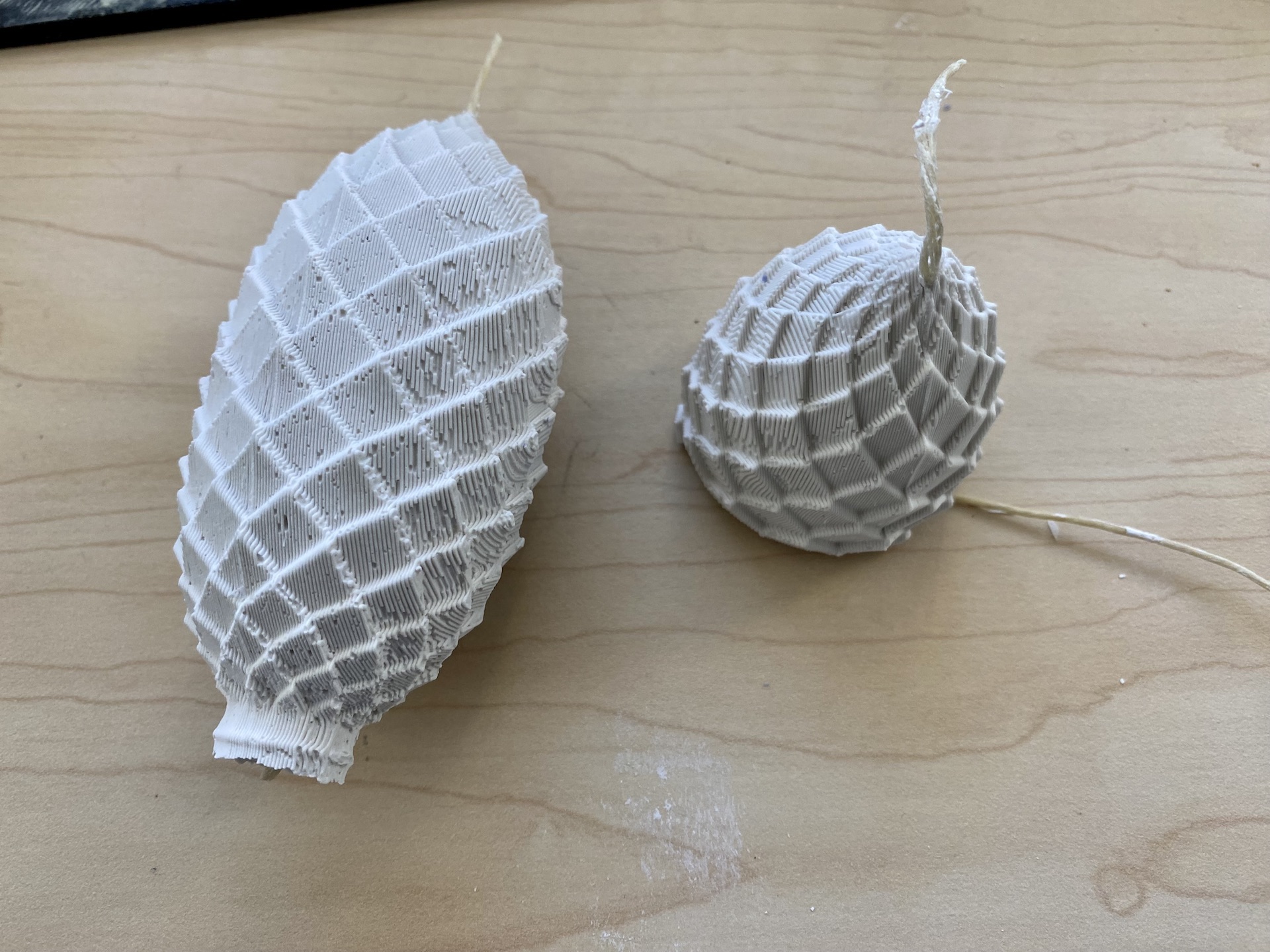
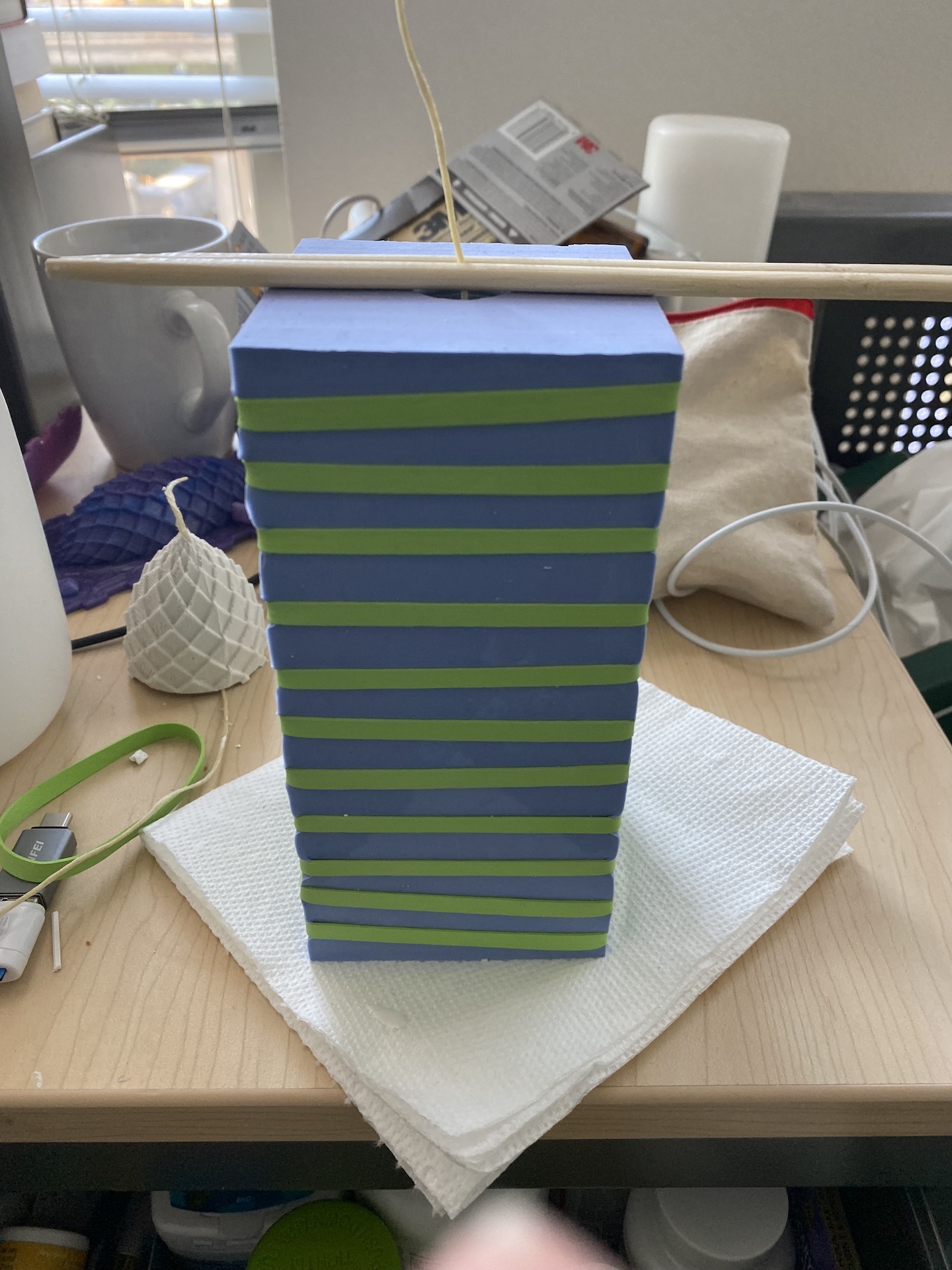
Silicone Mold
Casting with Oomoo 30 was fiarly easy. I didn’t mix quite enough for my first mold, and needed to do a second pour to have enough cover the surface. This is definitely where having the extended work time of the Oomoo 30 over the faster cure time of the Oomoo 25 really comes in handy. Luckily, the side of the mold that required two pours cured without issue.
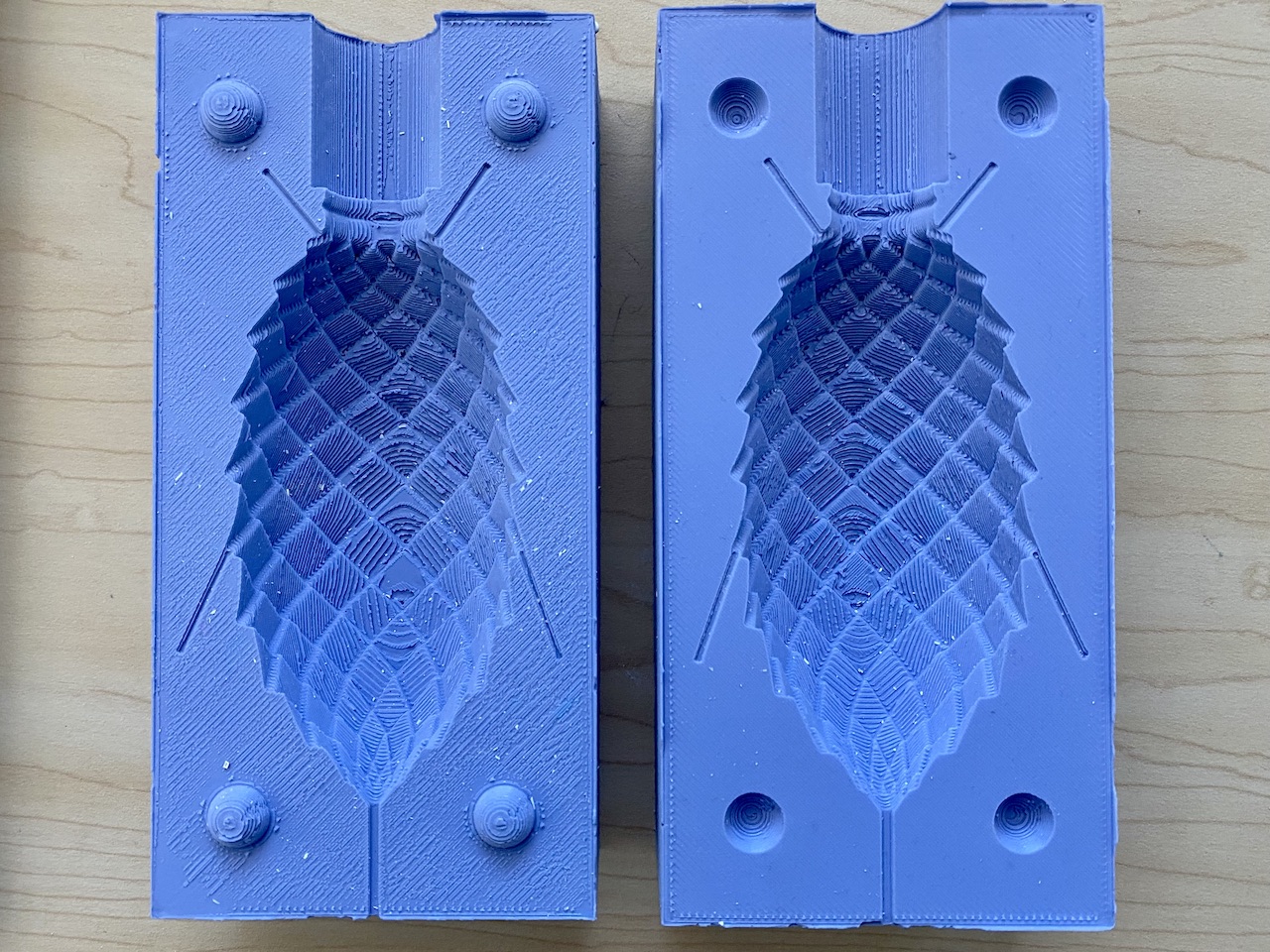
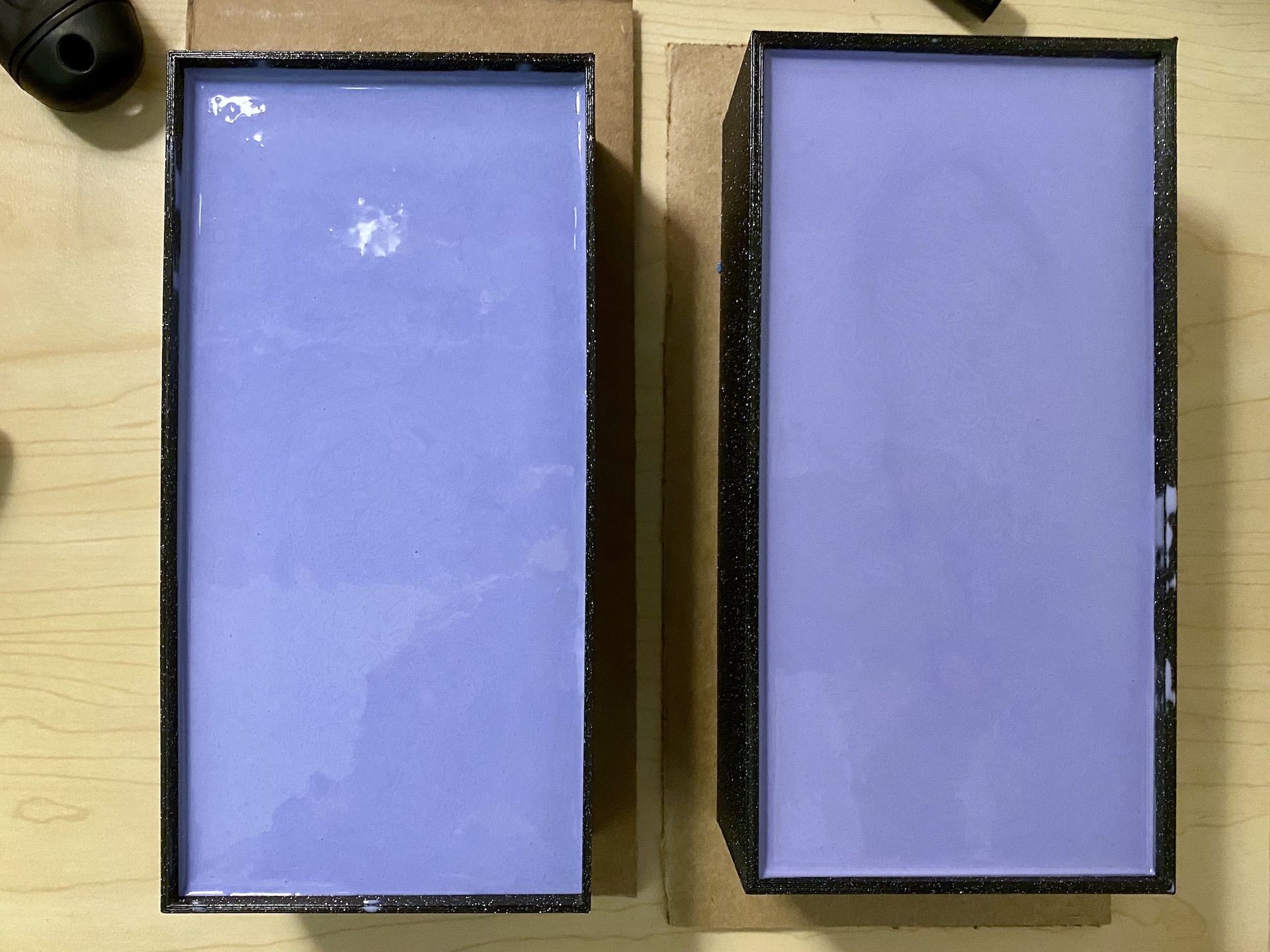
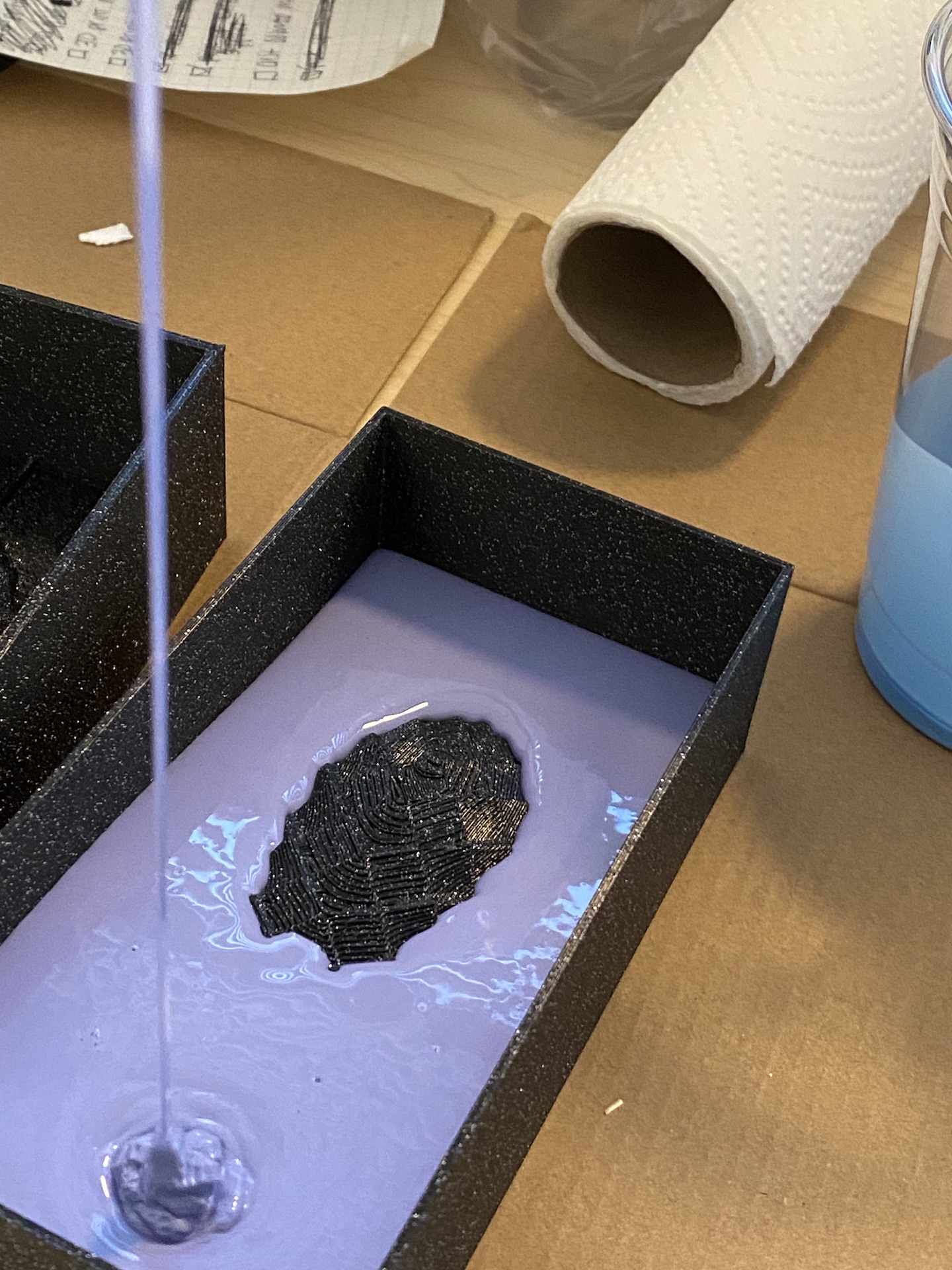

3D Printed Mold Shell
I went through a few 3D printed mold iterations before landing on a final design. The version I cast my silicone molds with uses a two part design similar to a spring bottom pan. The 3D printed part wiht the positive of the mold design can be removed from the exterior wall. This allows for the bottom piece to be swapped out with different designs!
If I were to do this again, the only thing I might change is making the walls taper slightly. It was quite difficult to get the finished silicone mold out of the 3D printed part. By havving a slight taper, where the wider end is at the top, it should be easier to de-mold the silicone part.
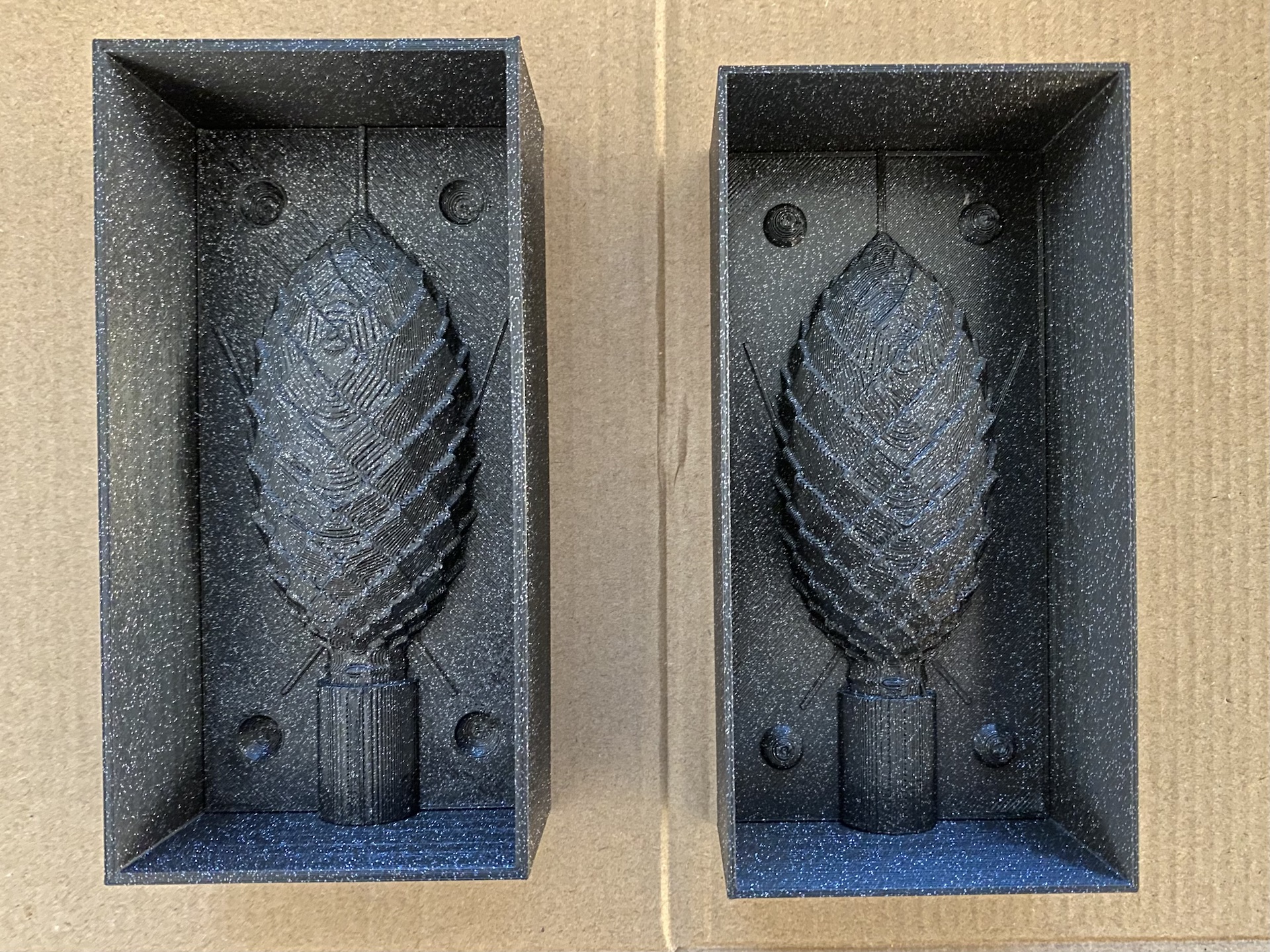
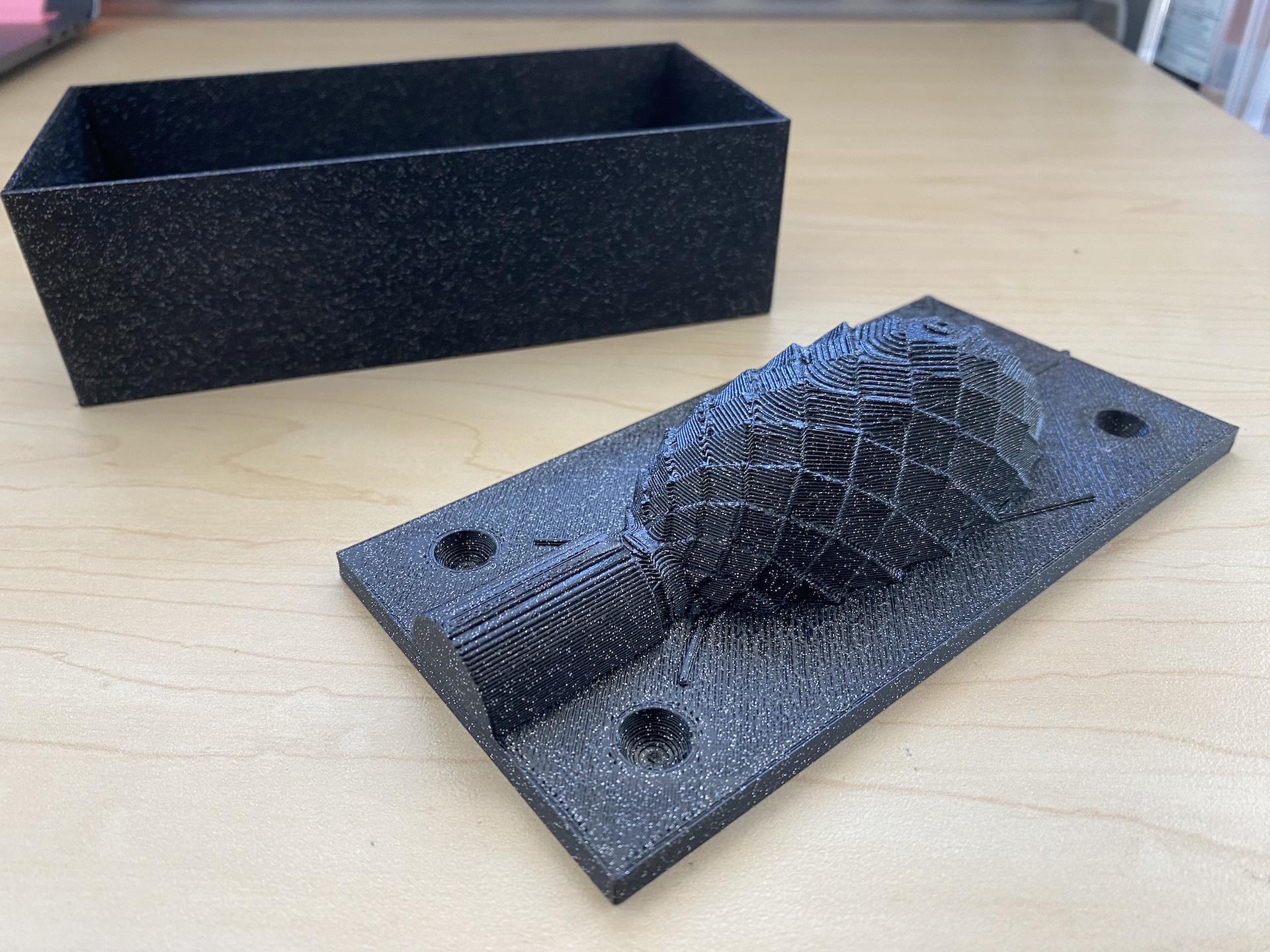
My early iteration was a poorly thought through two part design that used finter joints and a curved wall that was closed on one end. My thought was that, by having a curved wall, there would be less materal waste. However, upon further consideraion, I realized there were too many potential points of failure in this design. Making this was a fun opportunity to play wtih 3D printed joints (I made milled boxes for the joinery assignment). It also showed me that I had some loose screws and wasn’t getting good Z-access alignment on layers in tall prints. Because of this, I was able to fix that before printing my final lamp! (the fix was tightening the set screws on the Z coupler)
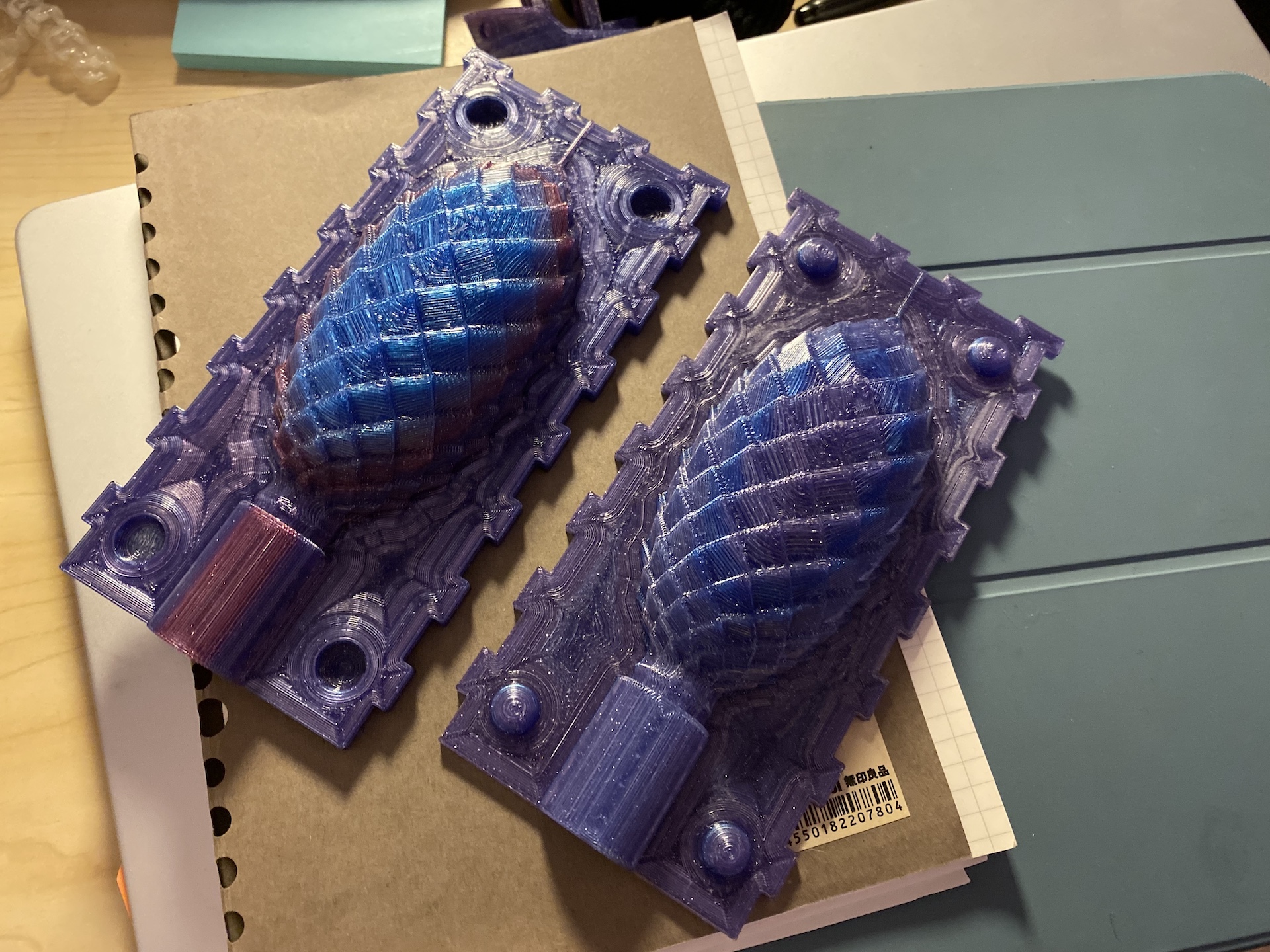
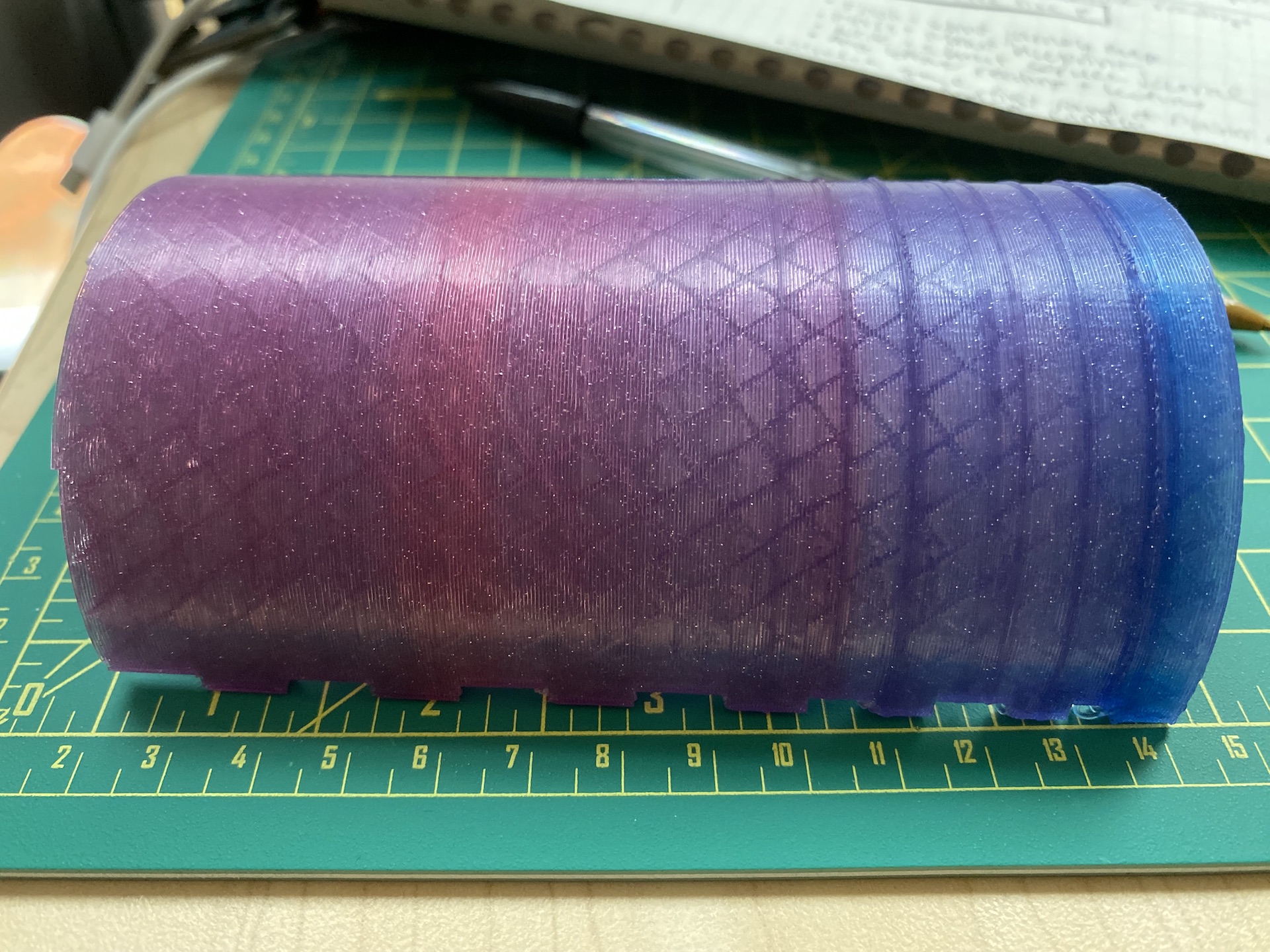
Process
I started with a pinecone STL that I downloaded from Thingiverse.
I designed quite a few versions of my 3D print before landing on the final design. Here’s a snap shot of some of those models.
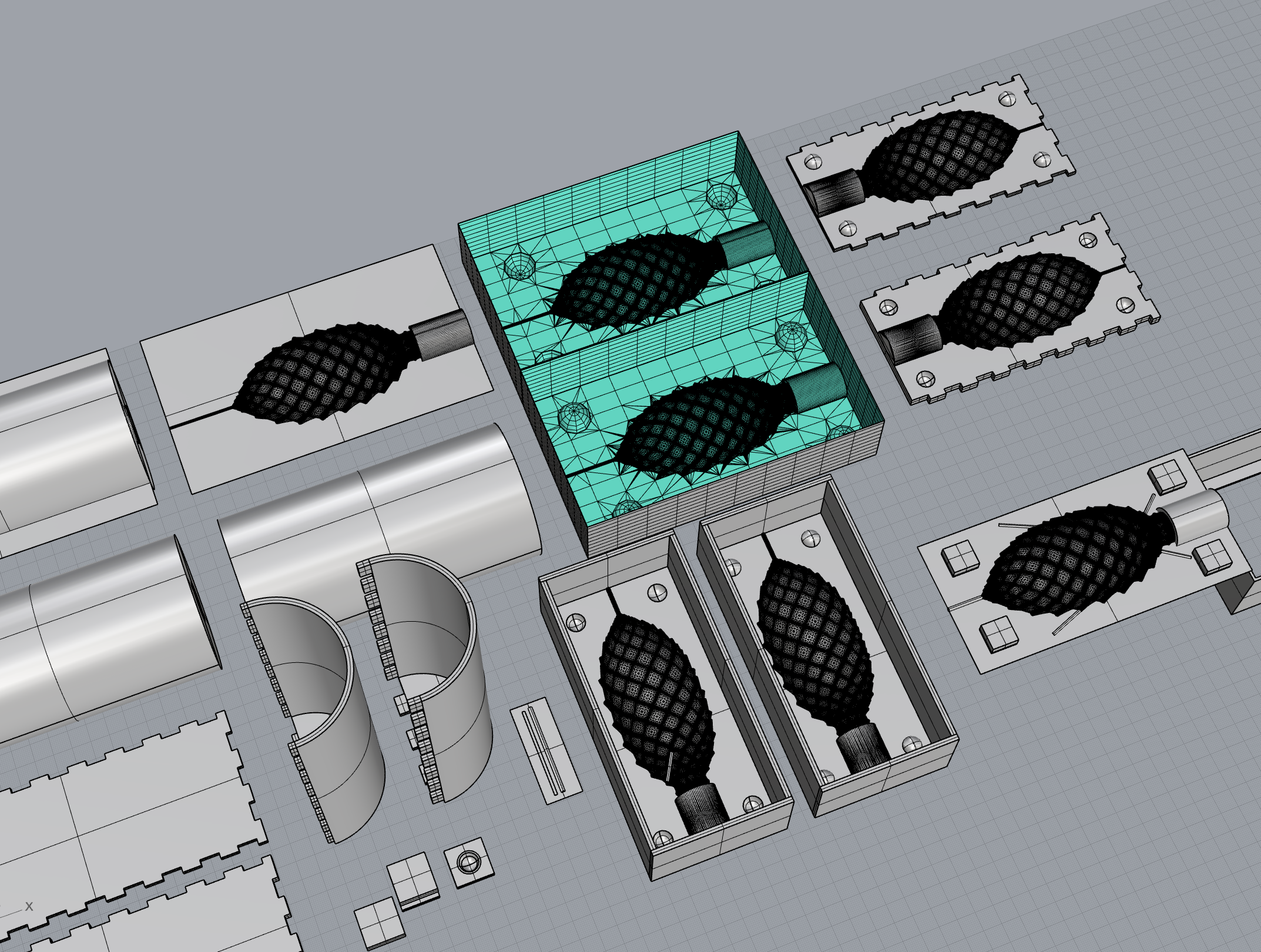
Here is the final version of the pieces for my 3D printed mold shell
